Inside North Korea: a pastel mirage of sci-fi architecture
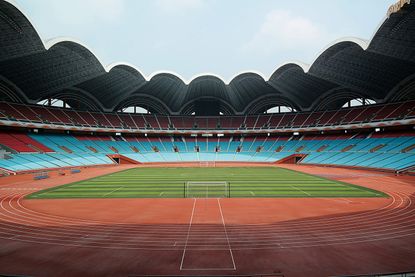
In a globalised world, the Democratic People’s Republic of Korea is utterly unique. Hermetic, heavily censored, and dominated by the cult-like image and ideology of the Supreme Leader, the Juche nation has become more open to tourists in recent years—but only on guided tours.
In a new book by architecture and design critic Oliver Wainwright – Inside North Korea – the world’s most secretive country is explored in photographs (also taken by Wainwright) of its architecture, sports grounds, museums, theatres and public monuments, most of them eerily empty and unanimated. The somewhat morbid attraction abroad to North Korea and the idea of the Hermit Kingdom as what he describes as ‘fascinating stage set’, is at odds with its deeply controversial politics and human rights violations.
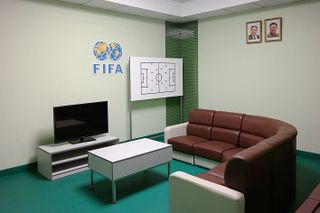
The recently renovated support rooms of the Rungrado May Day Stadium embody the essence of the current North Korean interior aesthetic. Built in 1989 and used for the Mass Games performances for years, the stadium reopened in 2015 with a new football pitch and running track, as well as the addition of the FIFA and Olympic logos. Courtesy of Taschen
Wainwright conjures a picture of North Korea you might not expect: he writes of a visit to Pyongyang in 2015 and encountering its pastel-coloured cityscape for the first time; he notes the nature-oriented planning of the city, built from scratch in 1953, surprising for a Soviet city. Other surprises are glimpses of the striking exteriors of the Pyongyang Circus; the Rungna People’s Pleasure Ground, a theme park completed in 2012 offering a mini-golf course, swimming pool and 4D cinema with moving seats; and the Yanggakdo International Hotel, with its bowling alley and sauna, and over 1,000 rooms for foreign guests.
Despite the ethics of celebrating these government sanctioned buildings, the book draws you in to the sci-fi beauty of the distinct North Korean aesthetic. ‘Architectural space must be composed to ensure that the leader’s image dominates all the elements of the space, and that all the architectural components throw the leader’s image in bold relief,’ declaimed King Jong Il.
With principles such as these, the buildings and their interiors are a conditioned kind of architecture, designed with one person in mind – and this is the version of ‘inside North Korea’ that a guided tour in the country will allow. As Wainwright reminds us, in such a controlled and isolated environment, there is possibly far more to see than meets the foreign eye.
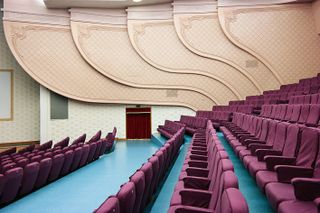
An interlocking composition of two buildings, one semicircular, one rectangular, the East Pyongyang Grand Theatre from 1989 houses an auditorium with an audience capacity of 3,500, along with dozens of rehearsal rooms. Renovation in 2007 saw the lobby fitted with plaster mouldings, highly polished stone tiles and a huge relief mural on the wall, while the theatre was decorated with scalloped peach-coloured walls, purple-upholstered seats and a bright-blue vinyl floor. Courtesy of Taschen
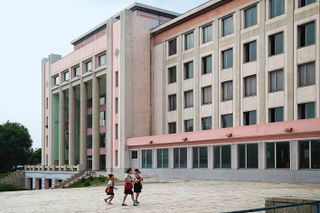
With 500 rooms covering an area of 50,000 sq m, the Students’ and Children’s Palace was built in 1963 as a place for extracurricular activities after school, with a 1,000 seat theatre, an indoor stadium, library and rooms for science, literature, art, industry and agriculture. Courtesy of Taschen
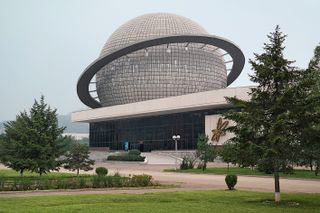
The planetarium forms part of the Three Revolutions Exhibition park, a grand campus built in 1992 to showcase the ideological, technological and cultural achievements of North Korea, from heavy industry and mining to agriculture and electronics. Courtesy of Taschen

Begun in 1987 but still unopened, the Ryugyong Hotel was intended to house 3,000 bedrooms and five revolving restaurants. It stood on the Pyongyang skyline for years as a concrete carcass, nicknamed the ‘hotel of doom’, but was finally clad with mirrored glass in 2012 as part of a deal with an Egyptian telecoms company. Courtesy of Taschen
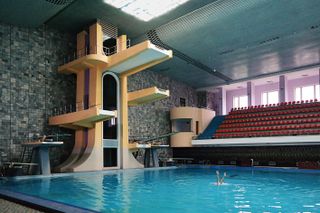
The Changgwang Health and Recreation Complex was the city’s flagship health centre when it opened in 1980. Covering an area of almost 40,000 sq m, it contains a sauna, bathhouse, swimming pools and hair salons. In a futuristic touch, the diving boards are reached by a mechanical elevator in a shaft faced with smoked glass. Courtesy of Taschen
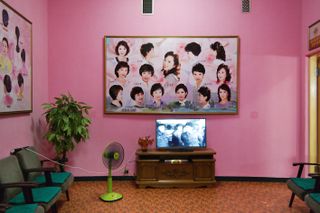
The hair salon at Changgwang Health and Recreation Complex, where customers can choose from a range of officially sanctioned haircuts. Courtesy of Taschen
INFORMATION
Inside North Korea, £40, published by Taschen
Wallpaper* Newsletter
Receive our daily digest of inspiration, escapism and design stories from around the world direct to your inbox
Charlotte Jansen is a journalist and the author of two books on photography, Girl on Girl (2017) and Photography Now (2021). She is commissioning editor at Elephant magazine and has written on contemporary art and culture for The Guardian, the Financial Times, ELLE, the British Journal of Photography, Frieze and Artsy. Jansen is also presenter of Dior Talks podcast series, The Female Gaze.
-
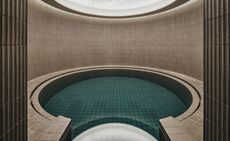 Find yourself at Six Senses Kyoto, the brand's breathtaking Japan debut
Find yourself at Six Senses Kyoto, the brand's breathtaking Japan debutSix Senses Kyoto opens its doors boasting tranquil, luxurious interiors by Blink Design Group
By Danielle Demetriou Published
-
 Shigeru Ban’s mini Paper Log House welcomed at The Glass House
Shigeru Ban’s mini Paper Log House welcomed at The Glass House'Shigeru Ban: The Paper Log House' is shown at The Glass House in New Canaan, USA as the house museum of American architect Philip Johnson plays host to the Japanese architect’s model temporary home concept
By Adrian Madlener Published
-
 Artist Mickalene Thomas wrestles with notions of Black beauty, female empowerment and love
Artist Mickalene Thomas wrestles with notions of Black beauty, female empowerment and love'Mickalene Thomas: All About Love’, a touring exhibition, considers Black female representation
By Hannah Silver Published
-
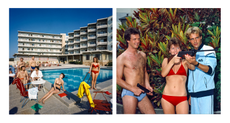 ‘Package Holiday 1968-1985’: a very British love affair in pictures
‘Package Holiday 1968-1985’: a very British love affair in pictures‘Package Holiday’ recalls tans, table tennis and Technicolor in Trevor Clark’s wistful snaps of sun-seeking Brits
By Caragh McKay Published
-
 ‘Art Exposed’: Julian Spalding on everything that’s wrong with the art world
‘Art Exposed’: Julian Spalding on everything that’s wrong with the art worldIn ‘Art Exposed’, Julian Spalding draws on his 40 years in the art world – as a museum director, curator, and critic – for his series of essays
By Alfred Tong Published
-
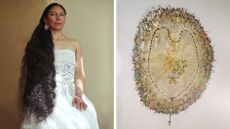 Marisol Mendez's ‘Madre’ unpicks the woven threads of Bolivian womanhood
Marisol Mendez's ‘Madre’ unpicks the woven threads of Bolivian womanhoodFrom ancestry to protest, how Marisol Mendez’s 'Madre' is rewriting the narrative of Bolivian womanhood
By Sofia de la Cruz Published
-
 Photo book explores the messy, magical mundanity of new motherhood
Photo book explores the messy, magical mundanity of new motherhood‘Sorry I Gave Birth I Disappeared But Now I’m Back’ by photographer Andi Galdi Vinko explores new motherhood in all its messy, beautiful reality
By Hannah Silver Published
-
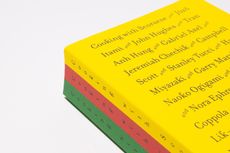 Best contemporary art books: a guide for 2023
Best contemporary art books: a guide for 2023From maverick memoirs to topical tomes, turn over a new leaf with the Wallpaper* arts desk’s pick of new releases and all-time favourite art books
By Harriet Lloyd-Smith Published
-
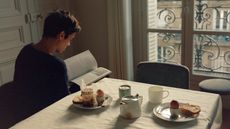 The best photography books for your coffee table
The best photography books for your coffee tableFlick through, mull over and deep-dive into the best photography books on the market, from our shelves to you
By Sophie Gladstone Published
-
 Behind the scenes of Stanley Kubrick’s The Shining: new book charts the making of a horror icon
Behind the scenes of Stanley Kubrick’s The Shining: new book charts the making of a horror iconPublished in February 2023 by Taschen, a new collector's book will go behind the scenes of Stanley Kubrick’s The Shining, charting the unseen making of a film that defined the horror genre
By Harriet Lloyd-Smith Published
-
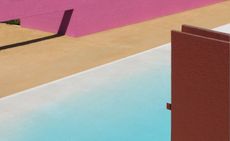 Brad Walls’ aerial view transforms pools into artwork
Brad Walls’ aerial view transforms pools into artworkAerial photographer Brad Walls provides a crisp conclusion to the summer months with new book Pools From Above – you’ll want to dive right in
By Martha Elliott Last updated